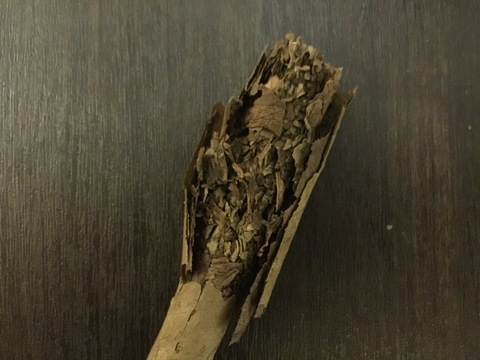How to Smoke Cigarillos Properly – We’ll Show You How
In this article, we’ll not only provide tips on smoking cigarillos properly but also share additional information about cigarillos. The term "cigarillo" is not strictly defined, so you’ll find varying explanations for it.
Some describe cigarillos as the little brother of cigars. Others consider them a hybrid between cigarettes and cigars. Yet others see cigarillos as a beginner-friendly version of cigars. We believe cigarillos don’t fit neatly into any category—they’re a unique form of enjoying tobacco. However, smoking cigarillos properly isn’t always straightforward—what exactly is "right" or "wrong"?
Inhaling or Puffing?
The question of how to smoke cigarillos properly doesn’t have a one-size-fits-all answer. Ultimately, it’s a matter of personal taste for the aficionado. There are no strict rules for smoking cigarillos: the smoker decides whether to enjoy them like a cigar—that is, by puffing—or to smoke them like a cigarette and inhale the smoke. This often depends on the strength of the cigarillo. From a health perspective, inhaling is not recommended as it introduces more harmful substances into the body. This also applies to filter cigarillos.
The true flavor experience when smoking a cigarillo is more likely achieved through what’s known as "puffing." Here, the smoke is drawn into the mouth and exhaled through either the mouth or nose. This method allows the complex aromas to develop fully as the smoke lingers in the mouth.
Even though cigarillos resemble cigarettes in form, many Cuban brands such as Romeo y Julieta or Cohiba use premium tobacco. This type of tobacco is far too valuable to be inhaled quickly and casually. As with premium cigars, the golden rule for cigarillos is to take your time, savor, and give your full attention to the smoke. Thanks to their smaller format, cigarillos can be enjoyed more quickly than a cigar, which is typically smoked over a longer period.
However, the smoking duration of cigarillos varies depending on their format and size. Small Cohiba Cigarillos MINI can be smoked in about five minutes, while other formats can offer up to 20 minutes of enjoyment.
A general rule of thumb is: one puff per minute is sufficient to ensure the tobacco doesn’t burn too quickly. If it burns too fast, the cigarillo tastes harsh, bitter, and scratchy, losing the pleasant, spicy-fruity aromas that fine Havana tobacco offers. So, take your time and enjoy smoking your cigarillo properly.
Learn more in our article: Inhaling a Cigar.
Cigarillo Production
Cigarillos contain more or less the same tobacco as cigars. This can be whole, long leaves known as long filler, or shorter, shredded tobacco leaves known as short filler. Long-filler cigarillos are quite rare.
In long-filler cigarillo or cigar production, whole leaves are used for the filler, wrapped in binder leaves, and then finished with a wrapper leaf. This type of production is typically done by hand and requires significant expertise.
For short fillers, the filler is made with chopped or shredded tobacco and then wrapped with a wrapper leaf. Due to the smaller size of cigarillos, less tobacco is required, and this process is now mostly performed by machines.
An example of a short-filler cigarillo: House of Smoke Brazilian Type Shortfiller Cigarillo Blau (74091 TFB)
Tobacco – Pure or Flavored
Due to their small size, cigarillos typically use milder tobaccos, often Java, Sumatra, or Brazilian tobaccos. Java tobacco is considered light and aromatic, Sumatra tobacco mild and spicy, while Brazilian tobacco is both aromatic and spicy.
Cuban cigarillos are naturally made from a select range of the finest tobacco leaves from the Vuelta Abajo region. For a pure tobacco experience, look for packaging labeled "100% tobacco product."
True cigarillos are wrapped in a proper wrapper leaf, not reconstituted tobacco, which is made from tobacco scraps. As some budget products marketed as cigarillos in Germany use reconstituted tobacco, it’s worth paying attention to this detail. The wrapper leaf also defines the origin of the cigarillo, with wrappers often sourced from regions like Brazil, Indonesia, North America, or Cuba, depending on the variety.
These days, many enjoy flavored cigarillos, infused with artificial flavors like vanilla, chocolate, whisky, and more. This appeals not only to pipe and cigarette smokers but also to fans of aromatic blends. In addition to the flavor, similar to many pipe tobaccos, the use of filters in these cigarillos may also be a factor.
Filtered cigarillos share similarities with cigarettes. Their wrappers are often reconstituted tobacco mixed with paper, making them not 100% tobacco products.
The Most Famous Brands
The most famous cigarillos are undoubtedly Cuban ones, such as those by Cohiba, Montecristo, Partagas, and Romeo y Julieta.
In addition to Cuban Habanos, German-made 100% tobacco products like those from August Schuster are worth mentioning. These include Partageno, Lepanto, Brasil Trüllerie, and Cardenal Mendoza.
Of course, more affordable options are available, including the popular and well-known Dannemann, Clubmaster, Meharis Agio, Agio Biddies, Willem II, La Paz, and Primavera cigarillos.
The market leader in Germany is the brand Moods Cigarillos
Another well-known brand is La Paz Wilde Filtro de Tabaco Wilde Aroma Cigarillos (Filter)
Cigarillo Formats
As mentioned earlier, cigarillos come in various formats. Typically, they are 8 to 12 cm long, but some can be as long as 20 cm. Their diameters range from 3 to 25 mm. Among Cuban brands, formats are categorized as Mini, Club, or Purito.
Further topics
Discover & enjoy
In our shop you will find:




















